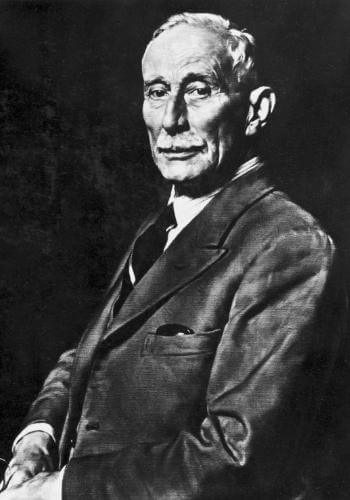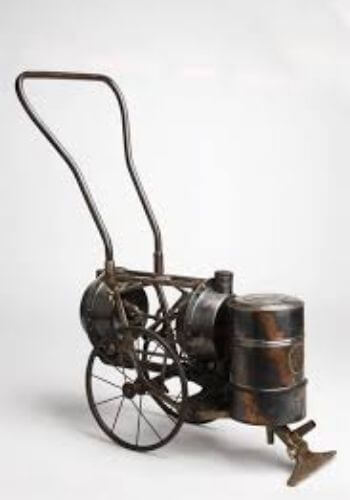What is a vacuum cleaner?
A vacuum cleaner, also known commonly as a vacuum or hoover, is a tool for removing residues from floors, tapestries, curtains, and other surfaces. It is usually electrically powered. Debris is collected using a garbage bag or cyclone for subsequent removal. Vacuum cleaners, which are used both in home and in industry, exist in a variety of sizes and models: small portable devices powered by batteries, models of wheeled boxes for home use, domestic central vacuum cleaners, huge stationary industrial devices that can handle several hundred liters dust before being emptied and self-propelled for the recovery of large spills or the removal of contaminated soils. Specialized vacuum cleaners can be used to suck dust and liquids.THE INVENTION OF THE VACUUM CLEANER
In 1901, if you had been lucky, you could have witnessed an amazing scene on the streets of London, a scene that would quickly revolutionize the way most of us clean our homes. Engineer Hubert Cecil Booth was launching his new vacuum cleaner in the city’s richest streets. First employed by Maudslay, Sons and Field in Lambeth in the 1890s, he was best known for designing hanging bridges and makeshift wheels at the exhibition center (including Vienna’s famous Riesenrad). But in 1901 he resumed his ability to clean carpets after witnessing the demonstration of a new machine at the Empire Music Hall in London. He realized that the exposed machine had a fatal defect. It has been designed to blow air in the hope of lifting dust from the carpet and inside the collection bag. The inventor told him that the method suggested by Booth instead, sucking dirt through a filter, was impossible. Challenge accepted, Booth set up on a mission to produce a machine that sucks, not blowing. After allegedly almost deadly tests, in which he drowned after putting a “filter” handkerchief on his mouth and sucking dust from the arm of a chair, Booth formed the British Aspirator Company and launched his new device. It was the huge beast of a machine seen towering the houses of wealthy Londoners in the early 20th century.Hubert Cecil Booth
 British engineer Hubert Cecil Booth patented a motorized vacuum cleaner on August 30, 1901. Booth’s machine took the form of a large horse-drawn gasoline unit that was parked outside the building to be cleaned with long pipes running through the windows. Booth first showed his vacuum device in a restaurant the same year and showed how much he could suck the dirt.
More American inventors would subsequently introduce variations of the same suction cleaning gadgets. For example, Corinne Dufour invented a device that sucked dust into a damp sponge, and David Kenney designed a huge machine that was installed in a cellar and connected to a network of pipes leading to every room in a house. Of course, these early versions of vacuum cleaners were bulky, noisy, stinky and commercially unsuccessful.
British engineer Hubert Cecil Booth patented a motorized vacuum cleaner on August 30, 1901. Booth’s machine took the form of a large horse-drawn gasoline unit that was parked outside the building to be cleaned with long pipes running through the windows. Booth first showed his vacuum device in a restaurant the same year and showed how much he could suck the dirt.
More American inventors would subsequently introduce variations of the same suction cleaning gadgets. For example, Corinne Dufour invented a device that sucked dust into a damp sponge, and David Kenney designed a huge machine that was installed in a cellar and connected to a network of pipes leading to every room in a house. Of course, these early versions of vacuum cleaners were bulky, noisy, stinky and commercially unsuccessful.
James Spangler
In 1907, James Spangler, janitor of a department store in Canton, Ohio, deduced that the sweeper he used was the source of his chronic cough. So Spangler touched with an old fan motor and tied it to a soap box stapled to a broom handle. By adding a pillowcase as a dust collector, Spangler invented a new portable and electric vacuum cleaner. Then he improved his basic model, the first to use a cloth filter bag and cleaning accessories. He obtained a patent in 1908.Hoover Vacuum Cleaners
Spangler quickly formed the company of electric suction sweeper. One of his first buyers was her cousin, whose husband William Hoover became the founder and president of Hoover Company, a vacuum cleaner manufacturer. James Spangler finally sold his patent rights to William Hoover and continued to design for the company. Hoover funded additional improvements to Spangler’s vacuum cleaner. The finished Hoover design looked like a bagpipe attached to a cake box, but it worked. The company produced the first commercial upright vacuum cleaner bag on a stick. And while initial sales were slow, they were kicked by Hoover’s innovative 10-day free home trial. Eventually, there was a Hoover vacuum cleaner in almost every home. In 1919, Hoover cleaners were widely manufactured with the “mixer bar” to define the time-devoted slogan: “It beats as it sweeps as it cleans”.Filter bags
The Airway Sanitizor Company, which started in Toledo, Ohio in 1920, introduced a new product called “fiber filter” disposable bag, the first disposable paper dust bag for vacuum cleaners. Air-Way also created the first upright vacuum cleaner with 2 motors, as well as the first “power nozzle” vacuum cleaner. Air-Way was the first to use a gasket on the dust bag and use a HEPA filter in a vacuum cleaner, according to the company’s website.Dyson vacuum cleaners
The inventor of Dyson vacuum cleaners James Dyson invented the G-force vacuum cleaner in 1983. It was the first bagless double cyclone machine. After not selling his invention to manufacturers, Dyson started his own business and began marketing the Dyson Dual Cyclone, which quickly became the fastest vacuum cleaner ever made in the UK.THE FIRST VACUUM CLEANER IN ACTION
 A fire red and gold aesthetic, according to journalist and author Jane Furnival, the vacuum cleaner drawn by distinctive horses and its delivered operators came to your house, immediately announcing to the neighborhood that you are holding a vacuum tea party.” A visit was not cheap – the cost was the same as the annual salary of a “tweeny”, a junior maid.
To perform miraculous cleaning, long pipes were introduced through the windows, the gasoline engine (and later the electric motor) was started, and the air was extracted by suction from the hose and nozzles through a filter.
Locals were encouraged outdoors to marvel at the amount of dirt and dust collected in a special glass chamber on the side of the machine, another cunning marketing strategy.
A fire red and gold aesthetic, according to journalist and author Jane Furnival, the vacuum cleaner drawn by distinctive horses and its delivered operators came to your house, immediately announcing to the neighborhood that you are holding a vacuum tea party.” A visit was not cheap – the cost was the same as the annual salary of a “tweeny”, a junior maid.
To perform miraculous cleaning, long pipes were introduced through the windows, the gasoline engine (and later the electric motor) was started, and the air was extracted by suction from the hose and nozzles through a filter.
Locals were encouraged outdoors to marvel at the amount of dirt and dust collected in a special glass chamber on the side of the machine, another cunning marketing strategy.
VACUUM CLEANER AS A LUXURY
After a wave of disapproval and a series of lawsuits, both against the disruption of the machine on the streets (including scary horses) and a number of unhappy inventors, Booth finally convinced the judge and jury that his powerful machine was the only cleaner vacuum cleaner at the time he had really worked. Cleansing everywhere from Buckingham Palace to the Royal Mint and Crystal Palace, where 26 tons of dust were removed from the beams during a stained fever explosion of the First World War, his references quickly established itself as a reliable cleaning machine. Vacuum cleaners were purchased by Russian Tsar Nicholas II, German Kaiser William II, the House of Commons and popular stores Dickens & Jones in London. Despite the drama and theater of the Booth machine, the basic technology and suction principle are the same as in most vacuum cleaners today. Vacuum cleaners quickly became smaller, more portable and, most importantly, cheaper. The smallest famous motor vacuum cleaners of Hoover and Electrolux began to appear before 1915. For the wealthiest households, annual evacuation so that domestic servants can complete their spring cleaning has become a thing of the past. The wealthy owners bought the new vacuum cleaners, eager to be considered the first to adopt technology, or seeking to retain the domestic aid that was rare during the First World War.THE FUTURE OF THE VACUUM CLEANER
The introduction of electrical appliances in the late nineteenth century provided a vision of a fun future for owners and less weight for domestic workers and domestic helpers. Gradually appeared carpet cleaners, washing machines and tumble dryers, electric or gas irons, and dishwashers. More recently, intelligent and robotic technologies have been joined. But despite these devices that save time and labor, households spend about the same time on tasks as 100 years ago. Why? Factors such as improved hygiene standards, the number of clothes loads, and the increasing time we spend on household chores such as pet care and child care have played their part. The work may be less physical, but we do the same thing. And despite some changes in the gender gap in tasks, women continue to do more than men. So, will the current raft of household appliances and smart appliances, from robotic vacuum cleaners to self-cleaning windows and ovens, finally give us the promised future of R&R? Only time will tell.
Related Posts

